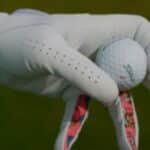Ready to rock the golf course in your golden years? These best golf swing tips for seniors are like your golfing cheat codes, making the game easy and fun.
Swinging a golf club when you’re a senior slightly differs from when you’re younger.
This article unveils a collection of the best golf swing tips for seniors, specially made to keep the fun alive as you age.
From starting with a simple warm-up to finding that perfect balance in your swing, these tips are like secret codes to make golf a blast, regardless of age.
So, grab your clubs, and let’s dive into the game with style and a swing that tells the story of all your years on the golf course. These golf swing tips for seniors aren’t something you need to try all at once.
Take your time – work on one tip, see if it helps your game.
Related Post:Best Golf Clubs For Seniors
Perfect the Three-Quarter Golf Swing tailored for seniors
Mastering the three-quarter golf swing is a valuable skill for seniors, offering a balanced approach that combines control and power.
This type of swing involves a shorter backswing, stopping at the three-quarter point of a full swing. Here are some key aspects to consider when adopting the three-quarter golf swing for seniors:
Reduced Strain:
The three-quarter swing is often easier on the body, reducing the strain on joints and muscles compared to a full swing or mobility challenges.
Enhanced Control:
With a shorter backswing, seniors can control the club and the ball more. This control is vital for accuracy, especially in the often delicate approach shots and around the greens.
Consistency:
The three-quarter swing promotes a more consistent and repeatable motion, making it easier for seniors to maintain a steady performance on the course. Consistency is key for reliable shot-making.
Related Post: How To Increase Club Head Speed For Seniors?
Focus on Short Game:
Seniors can leverage the three-quarter swing to excel in their short game, including chip shots and putting. The controlled motion allows for precision in these crucial aspects of the game.
Adaptability:
The three-quarter swing is versatile and adaptable to various situations on the course.
Seniors can use this swing for different club selections, adjusting the power and control based on the required shot.
Balance:
Achieving balance in the golf swing becomes more accessible with the three-quarter technique.
This is especially beneficial for seniors who may face challenges with balance and stability.
Improved Tempo:
The three-quarter swing encourages a smoother and more manageable tempo, contributing to overall shot consistency. Seniors can maintain a rhythmic and controlled pace throughout their rounds.
Focus on Technique:
Seniors can concentrate on refining their technique within the three-quarter swing, paying attention to factors like weight transfer, hand positioning, and follow-through.
Raise the tee higher and go for it:
When we say “raise the tee higher and go for it” in golf, we’re talking about adjusting the little peg (the tee) that holds your ball at the start of each hole.
Here’s a bit more detail:
Purpose:
The idea behind this is to change how you hit the ball, especially when using your driver. Raising the tee can help you hit the ball on the upswing, giving you more distance.
- Experimentation: Start by lifting the tee a bit higher than usual. It doesn’t have to be a drastic change, just noticeable. Try different heights during practice sessions to see what feels right for you.
- Observation: Pay attention to how the ball behaves. Does it go a bit higher? Does it travel a bit farther? This adjustment might affect your shot trajectory, and it’s all about finding what works best for your swing.
- Fine-Tuning: Golf is a game of precision, so feel free to experiment and find the tee height that suits your swing style, the club you’re using, and your personal preferences
In essence, it’s one of best golf swing tip for seniors that can have a significant impact on your game.
So, next time you’re on the tee box, give it a shot and see how it elevates your golf experience, quite literally
Open the toes to Avoid Hip pain
The best golf swing tip for seniors to “open the toes to avoid hip pain” involves a specific adjustment in your stance during golf, particularly when addressing the ball. Let’s delve into the details:
Stance Adjustment:
When setting up for a golf shot, “opening the toes” refers to turning the front foot slightly outward.
Instead of pointing both feet directly ahead, you pivot the toes of your lead foot (left foot for right-handed golfers, and vice versa for left-handed golfers) away from the target.
Hip Alignment:
Opening the toes contributes to a more natural alignment of the hips.
This adjustment can benefit individuals who experience hip discomfort, as it can reduce strain and torque on the hip joints during the swing.
Hip Rotation:
The golf swing involves a rotation of the hips, and the position of the feet plays a crucial role in facilitating this movement.
Opening the toes allows for a smoother hip rotation, potentially minimizing stress on the hip area.
Individual Variation:
It’s important to note that the ideal toe position can vary from golfer to golfer.
Experiment with different toe angles during your practice sessions to find a comfortable and effective position for your swing.
Consultation:
If you’re experiencing persistent hip pain, it’s advisable to consult with a golf professional or a doctor.
Quality of strike is Just as Important
When emphasizing the importance of the “quality of strike,” it directs attention to how you contact the golf ball during your swing. Here’s a bit more detail:
- Contact Impact: The quality of the strike refers to how well you connect with the golf ball at the moment of impact. A clean and well-executed strike can significantly influence your shot’s direction, distance, and control.
- Sweet Spot Focus: Achieving a high-quality strike often involves hitting the sweet spot of the clubface. The sweet spot is the center area of the clubface that provides maximum energy transfer to the ball, resulting in an optimal shot.
- Club Control: Striking the ball well is not just about power; it’s about control. A precise strike ensures you can accurately direct the ball, an essential aspect of successful and consistent golf play.
- Consistency is Key: Golf is a game of consistency, and the quality of your strikes contributes significantly to your overall performance. Consistently hitting the ball cleanly allows you to develop a more predictable and reliable game.
- Impact on Shot Outcome: The strike’s quality directly affects the ball’s trajectory and spin. A well-struck shot is more likely to travel on the intended path, reaching the desired distance and height.
- Swing Technique: Achieving a high-quality strike often involves focusing on your swing technique. Elements such as posture, balance, and swing path all ensure a clean and effective impact.
- Practice and Awareness: Improving the quality of your strikes requires dedicated training and an awareness of your swing mechanics. Regularly hitting balls on the driving range and paying attention to your ball-striking patterns can help refine your skills.
Improve your Wrist Action for better results
When discussing “improving your wrist action for better results” in golf, we focus on your wrists’ role in the golf swing. Let’s dive into the details:
- Wrist Flexibility: Effective wrist action involves maintaining a level of flexibility. It’s about balancing a firm grip and allowing your wrists to move naturally during the swing.
- Backswing Control: Your wrists play a crucial role in the backswing. Proper wrist action contributes to a smooth and controlled backswing, setting the stage for a powerful downswing.
- Downswing Acceleration: A controlled release of the wrists can generate speed and power as you transition into the downswing. This acceleration is key to achieving distance and accuracy in your shots.
- Impact Position: How your wrists position themselves at the moment of impact greatly influences the quality of your strike. A well-timed release and proper wrist alignment contribute to a solid hit with the ball.
- Follow-Through Dynamics: Wrist action extends into the follow-through phase. A natural and coordinated movement of the wrists post-impact ads finesse to your swing and contributes to a balanced finish.
- Clubface Control: Wrist action is intimately tied to the orientation of the clubface. Improving how your wrists move can enhance your ability to control the clubface, impacting the direction and trajectory of your shots.
- Practice and Awareness: Enhancing wrist action requires focused practice. Spend time on the driving range, paying attention to how your wrists move throughout the swing. Experiment with different wrist positions to find what works best for your swing.
- Consult with a Pro: If you’re struggling with your wrist action, consider seeking guidance from a golf professional. They can analyze your swing, identify areas for improvement, and provide the best golf swing tips for seniors to enhance their wrist mechanics.
Balance The Weight In The Feet
When we talk about “balancing the weight in the feet” in the context of golf, it refers to the distribution of your body weight between your feet during the different phases of your golf swing. Here’s a more detailed breakdown:
- Address Position: At the starting point of your golf swing, known as the address position, your weight should be evenly distributed between both feet. Your feet should be about shoulder-width apart, providing a stable foundation.
- Backswing Shift: As you initiate the backswing, there is a natural weight transfer to your back foot (right foot for right-handed golfers, left foot for left-handed golfers). This shift helps create a coiled and loaded position, preparing for an effective downswing.
- Top of the Backswing: At the top of your backswing, your weight should be predominantly on your back foot. This position signifies that you’ve completed the backswing and are ready to transition into the downswing.
- Downswing Transition: The downswing involves a smooth weight transition from the back foot to the front foot. This transition is crucial for generating power and initiating the correct sequence of movements leading to impact.
- Impact: At the moment of impact with the golf ball, your weight should have shifted predominantly to your front foot. This position allows for a solid strike.
- Follow-Through: As you follow through with your swing, your weight shifts onto your front foot. A balanced and controlled follow-through contributes to a well-executed swing.
- Maintaining Stability: Throughout the swing, it’s essential to maintain stability and avoid excessive weight shifts that could lead to losing balance. A balanced weight distribution helps in achieving a consistent and controlled swing.
- Practice: Achieving the right balance of weight throughout the swing requires practice. Spend time in the driving range, focusing on your weight transfer and balance. Use mirrors or video analysis to observe and refine your movements.
- Individual Considerations: It’s important to note that the ideal weight distribution can vary among golfers based on factors such as body type, swing style, and personal comfort. Experiment with different weight shifts to find what works best for your game.
In short, balancing the weight on the feet is one of the best golf swing tips for seniors. It contributes to stability, power generation, and overall swing consistency.
Taking the time to understand and practice proper weight distribution can significantly enhance your golf performance.
Related Post: Best Golf Clubs For Seniors With a Slow Swing Speed
Let The Arms Feel Heavy Around The Greens
The tip “let the arms feel heavy around the greens” in golf pertains to the touch and control needed for delicate shots near the putting surface. Here’s a detailed explanation:
- Relaxed Grip: When your arms feel heavy, it often implies a relaxed grip on the golf club. This is crucial for short shots around the greens where finesse is key. A tight grip can hinder the fluidity needed for these delicate shots.
- Soft Arms: Allowing your arms to feel heavy encourages a soft and supple approach. Instead of stiff or rigid movements, you aim for a more flowing and controlled motion, which is essential for short pitches and chips.
- Precision in Short Game: Around the greens, accuracy is vital. Allowing your arms to feel heavy helps with controlled movements, enabling you to navigate the clubhead more accurately. This is particularly important for short pitches and chip shots that require a gentle touch.
- Consistent Contact: A heavy arms sensation contributes to a constant point of contact between the clubface and the ball. Consistency in this aspect is crucial for controlling the distance and trajectory of your shots when playing shots close to the green.
- Feel for the Shot: Allowing your arms to feel heavy enhances your ability to “feel” the shot. This tactile sense is invaluable in the short game, where the golfer relies on touch and finesse rather than sheer power.
- Reduced Tension: The heaviness in the arms reduces overall tension in the upper body. Tension can be detrimental to the short game, causing erratic shots. A relaxed approach allows for better control and consistency.
- Practice and Experimentation: Achieving the right balance of heaviness in the arms requires practice. Spend time experimenting with different arm sensations during your short game practice sessions. Find the level of heaviness that allows you to maintain control and precision.
- Adaptability: The heaviness in the arms can be adjusted based on the shot at hand. You should allow a slightly heavier feel for shorter chips, while longer pitches require a more neutral sensation. It’s about finding what works best for each situation.
Exercise Matters a lot
Exercise is crucial for overall well-being and is included in one of the best golf swing tips for seniors.
It improves cardiovascular health, builds strength, aids in weight management, and supports mental health by reducing stress and boosting mood.
Regular physical activity contributes to bone health, helps prevent chronic diseases, and enhances sleep quality.
Additionally, exercise fosters social connections and empowers individuals by promoting a sense of accomplishment and self-efficiency.
Exercise is fundamental to fostering physical, mental, and emotional health.
Frequently Ask Question Best Golf Swing Tips for Seniors
Why is it important for seniors to adapt their golf swing?
Seniors should adjust their golf swing to accommodate changes in flexibility, strength, and agility that come with age. Tailoring the swing helps improve performance and reduces the risk of injury.
What are common challenges seniors face in their golf swings?
Seniors often deal with reduced flexibility, loss of strength, and balance changes. Adjusting the swing can address these challenges and enhance the overall golfing experience.
How can seniors improve their golf swing tempo?
Seniors can focus on a smoother and more controlled tempo, avoiding overexertion. It’s about finesse and consistency rather than relying solely on power.
What role does club selection play for senior golfers?
Choosing clubs with forgiving designs and lightweight materials can significantly benefit seniors. It helps enhance the swing and provides better overall performance.
Related Post: Best Golf Clubs For Seniors With a Slow Swing Speed
Final Thoughts |Best Golf Swing Tips for Seniors
In conclusion, the best golf swing tips for seniors are like a personalized dance on the course. It’s about tweaking moves to match what feels good for your body.
Best golf swing tips for seniors tips are like your golfing buddies, from gentle warm-ups to picking friendly clubs, finding balance, and going easy on the swing.
With these tweaks, seniors can turn the golf course into their playground, where every swing tells a story of experience, joy, and the pure love of the game.
I am sure by reading this article on the best golf tips for seniors; all your problems are solved. So, grab those clubs, enjoy the game, and let your swing be the melody of your golfing journey!
Note: Golfexperties is reader-supported. When you buy through links on our site, we may earn an affiliate commission. Read here







